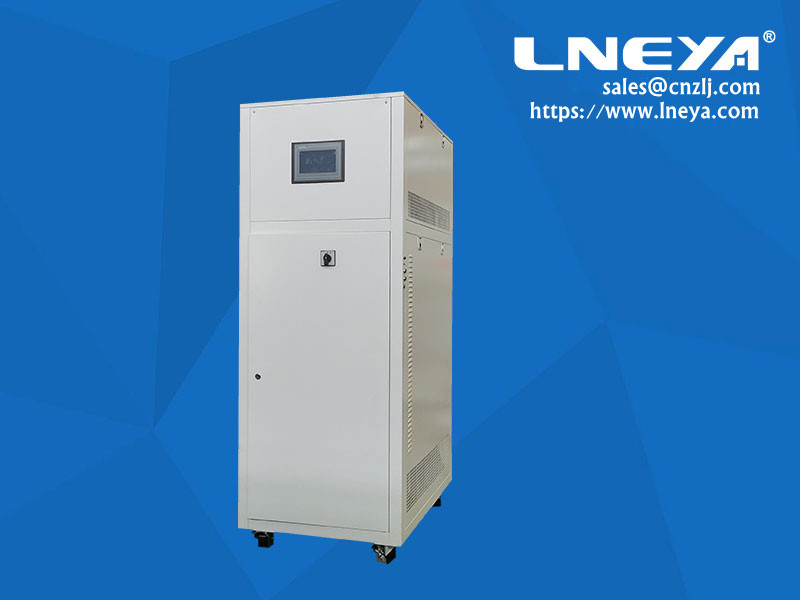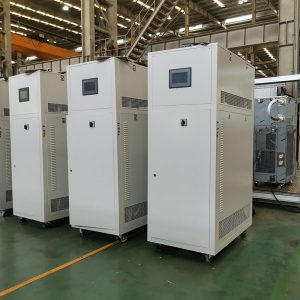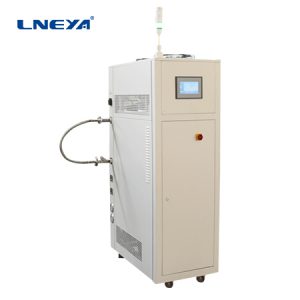What are the common connection methods for industrial chillers?

There are several connection methods for industrial chillers, which are suitable for pipe connection under different conditions.
First, welding connection
Welding is the most important and widely used connection method in pipeline engineering. Welding connection is a direct and fixed connection between pipe sections; it is commonly used in large-diameter steel pipes, high-temperature and high-pressure pipes, overhead steel pipes, buried or laid in trenches, etc. . It has obvious advantages such as high strength and tightness of the interface, omission of fillers and joint accessories, fast construction speed, and no limitation of pipe diameter; but it also has the advantages of non-disassembly, complex interface operation technology, and welding equipment and welder cooperation during construction. And other shortcomings.
Second, threaded connection
Threaded connection (also called threaded connection), it is suitable for pipes with small working pressure and small nominal diameter (dn≤32mm), as well as the connection of pipes with threaded valves, instruments, and equipment. When connecting, the joint should be smeared with filler prepared by lead oxide and glycerin, and evenly spread on the thread of the pipe thread (do not apply in the valve), or use PTFE plastic tape as the filler. The filler shall not protrude into the pipe to avoid reducing the pipe. On the end face, it is strictly forbidden to replace the filler with white painted hemp wire, and the wire connection must be tightened once, and shall not be returned or loosened.
Third, flange connection
Flange connection is to add gaskets (materials) to a pair of flange plates fixed on two pipe fittings, and then tighten them with bolts to connect them into a detachable whole. It has high connection strength, good sealing performance, convenient disassembly, and standardization of production. Therefore, it is widely used in equipment connections between pipes and flanged pipe fittings or flange interfaces, pipes and flange valves, and pipes. The location that needs to be disassembled and overhauled. During installation, a rubber plate gasket with a thickness of 4mm should be placed in the notch. The gasket shall not have uneven thickness, bevel or notch.
Summarize
We at LNEYA will make a specific analysis according to the customer’s specific working conditions. If you have equipment requirements or equipment problems, please contact us sales@lneya.com
관련 권장 사항
-
저온 챔버의 중요성
912저온 챔버는 일반적으로 냉장고와 테스트 부품을 분리하고 테스트 부품을 룸 타입으로 만들어 직원이 작업 할 수 있도록하는 대형 극저온 또는 극저온 테스트 장치입니다. 이러한 테스트 룸을 저온 ...
세부 정보 보기 -
LNEYA 초저온 냉동 순환기의 주요 유지 관리 포인트
1154초저온 냉장 순환기는 장기간 사용 후 유지 관리가 필요한데, 어떤 부분에 주의를 기울여야 하나요? 초저온 냉동 순환기를 제때 점검하고 유지 관리하십시오. 문제를 찾을 수 있습니다 ...
세부 정보 보기 -
액체를 100℃까지 가열하고 30℃까지 냉각하는 온도 제어 시스템
1115가열 방법으로는 증기 가열, 열유 가열 등이 있습니다. 증기 가열은 증기 공급이 가능한 공장에 적합한 보일러가 필요할 수 있으며, 열유는 고온에 적합하며 유...
세부 정보 보기 -
신에너지 자동차 모터 종합 테스트 시스템
1180LNEYA 신에너지 자동차 모터 통합 테스트 시스템을 실행할 때 제어판 설정이 필요합니다. 설정시 사용자가 사용 방법을 모르는 경우 설명서를 확인하여 사용할 수 있습니다. 새로운 에너지의 지표 ...
세부 정보 보기
 LNEYA 산업용 냉각기 제조업체 공급 업체
LNEYA 산업용 냉각기 제조업체 공급 업체













